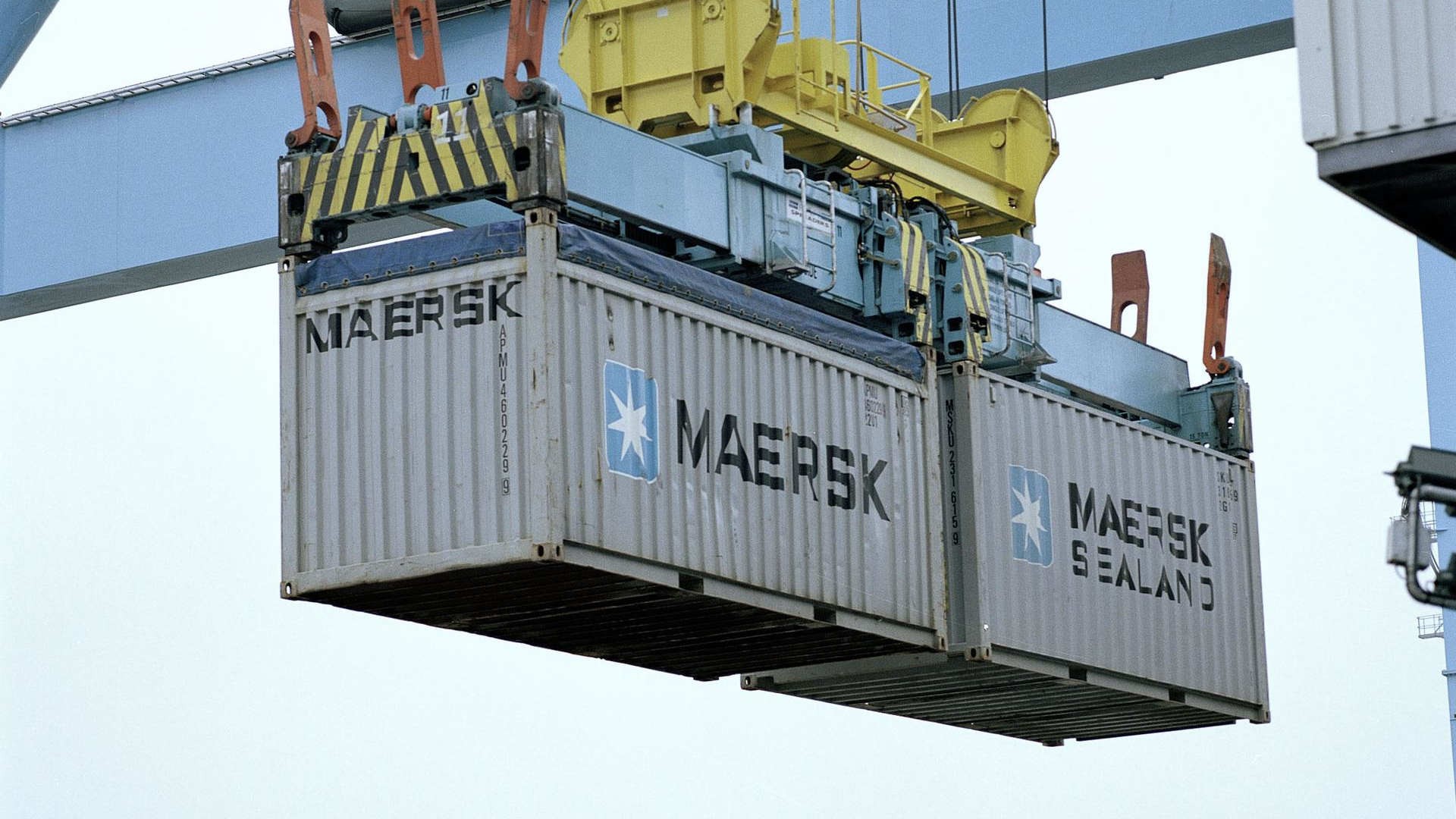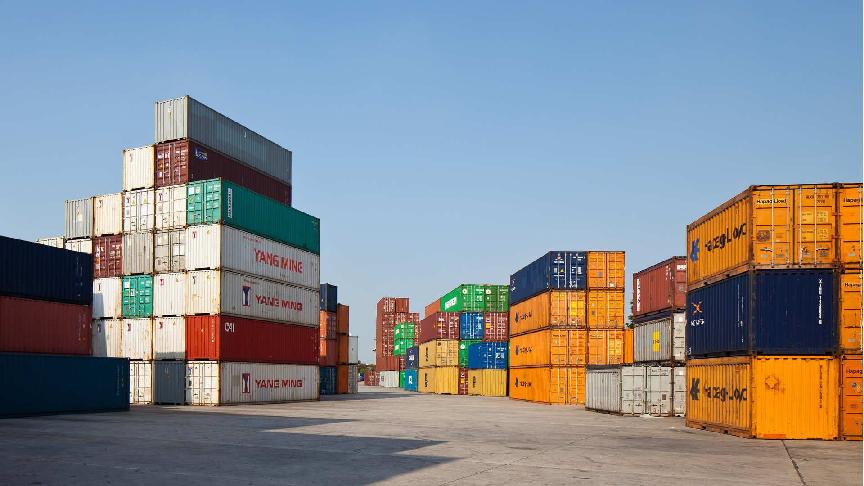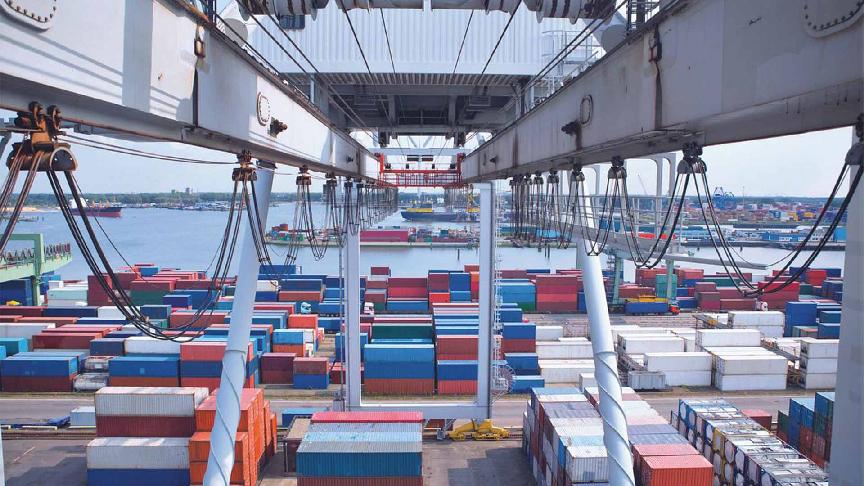MAERSK chief executive Vincent Clerc says he has no concerns over the record-high containership newbuilding orderbook, which has now surpassed 30% of the world’s existing fleet capacity.
“The orderbook, at 32%, is quite high but remember there are a number of years over which this capacity is going to phase in,” Clerc said during the company’s third-quarter financial results announcement.
He noted that containership newbuilding delivery lead times are at among their highest levels historically.
Industry data shows the current order backlog exceeds 10m teu, with deliveries peaking in 2027 when about 3m teu of new capacity is expected to enter service. However, the delivery schedule extends far into the next decade, easing fears of market oversupply.
Maersk itself has 71 vessels on order totalling some 917,000 teu, with deliveries spread through to 2031.
The company is expected to sign a new order for up to 12 ultra-large containerships, each with a capacity of 18,000 teu and equipped with dual-fuel LNG propulsion. Market sources suggest China’s New Times Shipbuilding is the front-runner to secure the contract.
The company has introduced 47 new containerships, with capacities of between 2,100 teu and 17,000 teu since 2023.
Clerc emphasised that continued trade imbalances, particularly in relation to China, mean underlying demand growth is higher than forecasts suggest, especially on key east-west routes.
“The container market is growing at about 4% annually, but headhaul trades such as Asia to Europe are growing at 7%. So, you will need more capacity to be able to carry this cargo,” he said.
Global container shipping faces mounting imbalances added Clerc, who highlighted China’s key role in distorting demand forecasts.
However, Clerc noted that should future container growth fall short of expectations then ship recycling would become a vital tool in restoring balance between supply and demand.
“Not a single large containership has been scrapped in the past six years, so there is pent-up demand for recycling ships,” he noted.
Clerc warned that a slowdown in Chinese exports and a potential return to the Suez Canal route could negatively impact the delicate balance between containership supply and demand.
“If those headwinds materialise, we can go back to using the tools we’d normally use, including scrapping, vessel idling and slow steaming,” he said. “These are significant levers we can use to balance the outlook.”
Clerc expressed cautious optimism that the shipping giant may soon resume using the Suez Canal, following the ceasefire agreement between Israel and Hamas reached in October.
He said the recent truce offers a potential path toward reopening one of the world’s most vital shipping routes, which has been largely avoided by container lines since December 2023.
“The ceasefire agreement is a big step towards being able to return to the Suez Canal route, but we need to make sure the ceasefire is entrenched,” Clerc said.
“We’re monitoring it quite closely to see if we can start to have safe passage. If the ceasefire holds, then we’ve made a big step towards returning through the Red Sea.”
While the ceasefire has eased tensions in the region, Clerc emphasised that Maersk will not rush into resuming operations through the Suez Canal.
“We need to see the process move ahead,” he added. “Once that happens, we will have a better view of what it means for returning ships to the Red Sea and Suez Canal.”
A sustained ceasefire and improved security conditions would mark a significant step toward restoring Suez Canal transits by big container carriers.
While Clerc suggested a cautious return to the Suez Canal by Maersk, the Suez Canal Authority disclosed today that Clerc has already opened discussions with them to return to using the Egyptian waterway.
The SCA stated that Maersk is keen to take the initiative to fully return to the Suez Canal “after discussing with the authority and studying all indicators”.
The meeting is said to have included future sailing plans in light of the positive indicators of recent developments in the Red Sea region.
Meanwhile, Clerc disclosed that Maersk is now starting to reap the benefits of its strategic collaboration with Hapag-Lloyd via the Gemini Cooperation.
Fully implemented in June 2025, one of the aims of the joint network is to enhance service reliability with faster response to disruptions and shifts in market demand.
Clerc said in its first few months of full operation, the Gemini Cooperation has already delivered on expectations, and has provided significant cost savings in bunkers while demonstrating reliability improvements compared to its previous 2M alliance with Mediterranean Shipping Co.
The recent lack of agreement by member states at the International Maritime Organization over its Net-Zero Framework was described as a “non-event” by Clerc, who said it would have little-to-no impact on future ship fuel decisions.
“Every ship on order has a dual-fuel engine, either LNG or methanol,” Clerc said.
“Everybody understands that when you take a bet on the next 30 years by ordering a ship, you cannot just base your decision on what the IMO is doing today.”
He emphasised that shipowners are making long-term investment decisions that extend far beyond the current regulatory landscape.
“Understand that what fuel optionality you have is for the next 30 years. I don’t think that owners will start to order conventional fuel ships again and think the green transition is not going to be an issue.”
While the lack of consensus within the IMO may have slowed momentum in the industry’s energy transition, Clerc said it is unlikely to alter fleet renewal or ordering behaviour.







